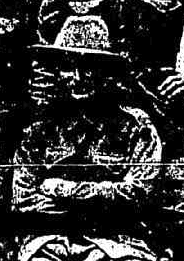CARTER, David John
| Service Number: | 13266 |
|---|---|
| Enlisted: | Not yet discovered |
| Last Rank: | Private |
| Last Unit: | Army Medical Corps (AIF) |
| Born: | Not yet discovered |
| Home Town: | Not yet discovered |
| Schooling: | Not yet discovered |
| Occupation: | Not yet discovered |
| Memorials: | Bendigo Great War Roll of Honor, Marong Presbyterian Church Roll of Honour |
World War 1 Service
| 7 Mar 1916: | Involvement Private, 13266, Army Medical Corps (AIF), --- :embarkation_roll: roll_number: '23' embarkation_place: Melbourne embarkation_ship: HMAT Karoola embarkation_ship_number: A63 public_note: '' | |
|---|---|---|
| 7 Mar 1916: | Embarked Private, 13266, Army Medical Corps (AIF), HMAT Karoola, Melbourne |
Served almost the entirety of the 14th Field Ambulance's service on the Western Front
David John Carter was born in Kangaroo Flat near Bendigo in 1895. He was the son of Alfred John Carter (1852-1915) and Eleanor Shelton (1857-1913). Prior to enlistment he worked as a Railroad Porter. He joined the Special Reinforcements of the Australian Army Medical Corps on 15 July 1915, aged 20. He had previous military service with the 56th Infantry in the Citizen Forces.
Initially he was posted to the AMC at Ascot Vale, then to Broadmeadows before embarking from Melbourne aboard HMAT A63 Karoola on 7 March 1916. On 22 April 1916 his service records show that he transferred from 4th Field Ambulance and was Taken on Strength with 14th Field Ambulance A.I.F. at Ismailia in Egypt. This coincided with the expansion of the AIF post-Gallipoli. On 19 June 1916 he embarked from Alexandria aboard Royal George for Marseilles where the 14th Field Ambulance arrived on 27 June and commenced a three-day train trip to Pas de Calais.
Carter’s service records show that he remained with the unit for the next fourteen months by which time he must have been well and truly exhausted and was sent on a two-week furlough to England. The 14th Field Ambulance was part of 5th Division AIF, and provided medical support in multiple engagements over the period. The unit War Diary provides a good overview of the chain of evacuation during the Battle of Fromelles which would have been David Carter’s first major engagement. During Fromelles, the 14th Field Ambulance treated over 1000 wounded during 19, 20 and 21 July 1916. The 14th with the 15th Field Ambulance had their main dressing station in a factory at Bac St. Maur. The 14th Field Ambulance was responsible for 'Second Line' casualty evacuation from 'First Line' Regimental Aid Posts (RAP) in each battalion of the 14th Brigade, however the unit also assisted the wounded of other Brigades across the 5th Division. The Field Ambulance deployed personnel forward to retrieve casualties from the RAPs and then transported them to the Advanced Dressing Station and then to a Casualty Clearing Station (CCS). At Fromelles, owing to the position of the 14th’s Dressing Station, it became the 5th Division’s Main Dressing Station and over a 26-hour period 2,357 patients were evacuated through to the 2nd Australian CCS. The 5th Division Official History records that the ‘bearers of the field ambulances worked throughout the night and the following 24-hours in positions of great danger and difficulty.’
Outside of his two week furlough in England in September 1917 and another two week period at the end of August 1918, Carter’s service records show him present with the 14th Field Ambulance throughout their time on the Western Front including Second Bullecourt (3-6 May 1917) during which the unit suffered 3 killed and 13 wounded, the Battle of Polygon Wood (26 September 1917) in which the unit surfed 3 dead and 19 wounded, Villers-Bretonneux (24 April 1918) and the start of the Hundred Days Campaign in August 1918.
David Carter stayed on in France until April 1919, then spent a month in England before returning to Australia at the end of May that year. Post-war he married Florence Irene Hocking (1897-1971). They had two children Irene Merles Carter (1921-1994) and Hilton David John Carter (1923-1989).
David Carter died on 23 July 1957 in Coburg, Victoria and was buried in Fawkner.
Submitted 7 October 2024 by Tim Barnett










